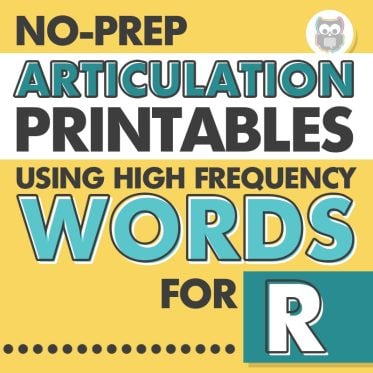
As an SLP with a growing caseload (the average is 49.2 students!) and shrinking planning time, finding resources that work across multiple students and goals can feel impossible. That’s where the Story Unit Approach comes in – a powerful method that uses narrative frameworks to address multiple speech and language targets simultaneously, helping you work smarter, not harder.
What Is a Story Unit Approach for SLPs?
A Story Unit uses a central narrative as the foundation for addressing multiple speech and language targets across different students and groups. Unlike traditional approaches that require separate materials for each goal area, a Story Unit creates a cohesive framework that adapts for various objectives and ability levels.
For SLPs, this means using the same core materials to target:
- Articulation and phonology
- Vocabulary and semantics
- Syntax and morphology
- Narrative skills
- Social pragmatic language
- And much more!
Why Story Units Are Perfect for Busy SLPs
Our research with thousands of SLPs revealed that time constraints represent your biggest challenge. Story Units directly address this pain point by:
- Maximizing efficiency in planning and preparation
- Simplifying implementation across multiple settings
- Reducing cognitive load during back-to-back sessions
- Creating natural opportunities for mixed groups
- Fostering deeper student engagement than isolated drills

Key Components of an Effective SLP Story Unit
- Strategic Story Selection: Choose narratives with curriculum relevance, versatility across goals and ages, high engagement factor, and natural therapeutic opportunities.
- Simple Differentiation System: Create quick adaptations for different language levels, age groups, goal areas, and therapy formats.
- Goal-Aligned Activities: Develop articulation practice using story vocabulary, sequencing tasks, WH-questions, and vocabulary activities that directly support IEP objectives.
- Easy Progress Monitoring: Use efficient data collection that aligns with goals and tracks progress across multiple sessions.
How to Implement a Story Unit Across Your Caseload

Step 1: Choose Your Story:
Look for engaging illustrations, repetitive phrases, and clear problem-solution structures.
Pro Tip: Select stories with enough depth for older students but simple enough structure for younger ones. Books like “The Day the Crayons Quit” work across elementary ages while offering rich language opportunities.
Step 2: Map Goals to Story Elements
Create a quick reference guide showing how different story elements connect to your common goals:
| Goal Area | How to Target with Story |
|---|---|
| Articulation | List key words with target sounds |
| Vocabulary | Identify tier 2 vocabulary words |
| Grammar | Note opportunities for targeted structures |
| Narrative | Highlight story grammar elements |
| Social Language | Identify perspective-taking opportunities |
Step 3: Develop Differentiated Materials
Develop simple materials that adjust difficulty (visual supports, question cards, response options) for different students.

Step 4: Implement Across Settings
Modify your approach for pull-out therapy, classroom push-in, or teletherapy as needed.
Overcoming Common Challenges
| Challenge | Solution |
|---|---|
| Diverse Caseload Needs | Create tiered activities for each story, categorized by goal area and complexity |
| Managing Materials Across Schools | Develop a digital organization system with portable physical kits |
| Maintaining Student Interest | Introduce new activities with the same story rather than changing stories frequently |
| Curriculum Alignment | Select stories that connect to grade-level themes or collaborate with classroom teachers |
Example: “The Rainbow Fish” Story Unit
Here’s how to use one book across your entire caseload in a single day:
“The Rainbow Fish” (by Marcus Pfister) for Multiple Groups:
Articulation Group (K-2)
- Students find and practice /s/ sounds in key words: scales, swim, sparkle, share
- Quick activity: Students touch a shiny scale when they hear or say their target sound
Language Group (1-3)
- Use simple story map (beginning, middle, end) for sequencing
- Students retell using past tense verbs and sequencing words
- Differentiate by adjusting sentence complexity based on skill level
Social Skills Group (3-5)
- Discuss character feelings throughout the story
- Simple prompt: “How did Rainbow Fish feel when no one played with him?”
- Connect to students’ real experiences with sharing and friendship
Remember: Keep all materials in one grab-and-go folder to use across multiple schools and groups. Track data on a single sheet while using the same core materials!
Looking for a one-stop solution for your entire caseload?
Our Story Unit Bundle is here to make your life easier! With 1,000+ pages of printables, images, activities, and a digital version. Perfectly designed to cover multiple speech and language goals, it’s the ultimate resource for busy SLPs looking to streamline their sessions while delivering high-quality therapy.
👉 Click here to get your hands on the complete Story Unit Bundle
What story-based activities have worked well in your therapy sessions? Share your experiences in the comments below!




















Leave a Comment